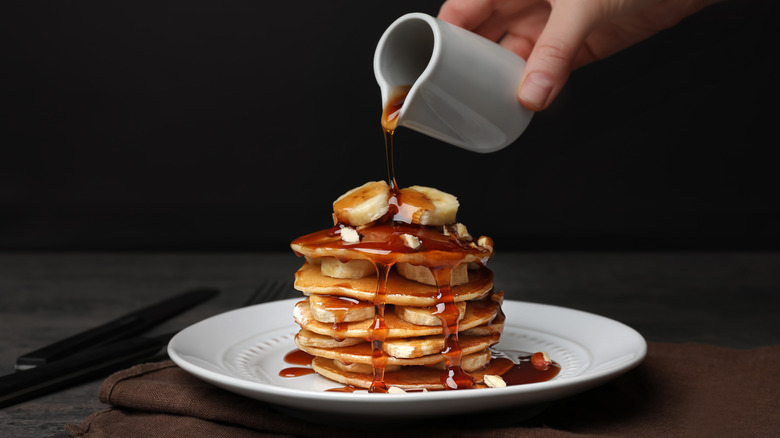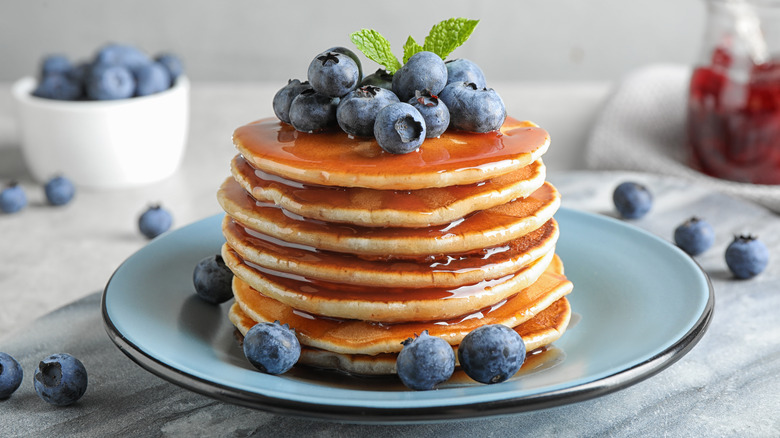The Real Difference Between Grade A And Grade B Maple Syrup
Pure maple syrup is delicious, there's no use denying it. The only acceptable companion to top a morning stack of flapjacks, you might not give maple syrup much thought — that is, unless you're standing in front of the maple aisle at your local supermarket. In the past, you might have noticed two distinctions between bottles of maple syrup: Grade A and Grade B. While the grading system has since changed, the maple syrup has not, which is we're here to finally demystify the difference.
Maple syrup is synonymous with Canadian food culture as it stems way back into the country's history. First harvested by Indigenous groups like the Mi'qmaw, Haudenosaunee, and Anishinaabe Peoples, Foodism reports that maple syrup was considered as a gift from the Creator and was used in celebrations of Thanksgiving since the 16th century. Masters of maple, the practice grew popular and now is one of Canada's most valuable industries.
Made from boiling maple sap, pure maple syrup contains just one ingredient and is quite labor intensive, which is what makes it more expensive when compared to pancake syrups made from corn syrup and maple flavoring, notes Taste of Home. Interestingly, within the realm of maple syrup, there are also some unique distinctions, which can be explained through the grading system.
There's no change in quality, just texture and taste
Much like eggs or beef, maple syrup can be evaluated using a grading system. However, for maple syrup, these classes are less about quality and more about preference. But, that got to be a bit confusing for consumers as they wrongly believed that Grade A was superior to Grade B. It's for this reason that in 2015, Tree Juice Maple Syrup reports that the Canadian Food Inspection Agency and the United States Department of Agriculture changed the grading system, labeling all bottles Grade A, but with descriptions.
In order to understand why these levels exist, first let's think about how maple syrup is made. Despite the fact that sap is as clear water when it's harvested, as it boils, it becomes thicker and more robust in flavor (via Sugar Creek Maple Farm). Grade B maple syrups were no different in how they adhered to the same guidelines of Grade A syrups, but texture and taste did make them different.
While Grade A was once reserved for thinner, lighter-hued and delicate-tasting maple syrups, Grade B has shifted into the same class to fight against maple prejudice. Dubbed Grade A: Dark Amber, Epicurious explains that this formerly Grade B syrup has a much thicker consistency, darker color, and intense flavor as a result of being made later in the maple season — the more you know.

